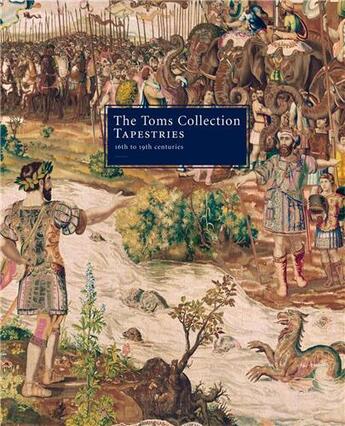-
Date de parution : 01/04/2010
-
Editeur :
Niggli
-
EAN : 9783721207309
-
Série :
(-)
-
Support :
Papier
Résumé:
The Toms collection boasts one of the most important groupings of tapestries privately assembled during the second half of the twentieth century. Its more than 100 examples, woven between the sixteenth and nineteenth centuries in workshops of Flanders, France, Italy and England, are noteworthy... Voir plus
The Toms collection boasts one of the most important groupings of tapestries privately assembled during the second half of the twentieth century. Its more than 100 examples, woven between the sixteenth and nineteenth centuries in workshops of Flanders, France, Italy and England, are noteworthy not only for their geographic, historical and thematic diversity but also for their remarkable condition.
Mary Toms, widow of Reginald Toms, bequeathed this legacy in 1993 to the Canton of Vaud (Switzerland).
The collectors had resided at the Chateau de Coinsins between Lausanne and Geneva since 1958. In 2000 the State of Vaud united the Toms collection with the equally prestigious Pauli donation of contemporary textile art (1961-1992), creating a single institution, the Fondation Toms Pauli.
This catalogue documents all the woven works in the Toms collection, providing historical and artistic analysis. The authors, Guy Delmarcel, Nicole de Reynies and Wendy Hefford, are all recognised authorities in their respective fields of Flemish, French and English tapestry. Readers can discover a broad range of works belonging to one of Europe's great artistic traditions. Acquired on the art market in the 1960s, the tapestries had disappeared from public and scholarly view for nearly half a century.
In their time, tapestries were far more costly than paintings. However, beyond their sheer monetary worth, the complex processes of their production and distribution make them eloquent witnesses of the times in which they were made and the societies that appreciated them. This richly illustrated volume is intended for novice readers, veteran tapestry lovers, and specialists alike.
Donner votre avis














